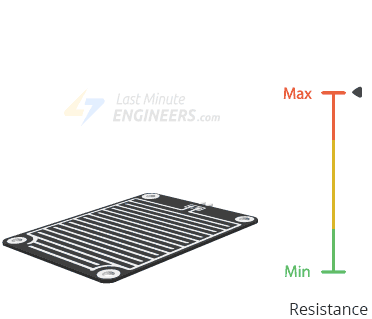Is there a consensus on the "heaviness" of rain? remindedand Relationship between Probability of Precipitation and Predicted Amount of Rain remind me of a gedankenexperiment of mine. I like to imagine a home project Arduino or Raspberry Pi-based weather monitor that lets me know the precipitation situation outside.
The "state of the art" for electronic hobbyists is the interdigitated electrode sensor, which is the way it is because it's easy to mass produce cheaply as a printed circuit board, not because it's a good idea.
Source: Last Minute Engineers' How Rain Sensor Works and Interface it with Arduino
This resistance is inversely proportional to the amount of water:
- The more water on the surface means better conductivity and will result in a lower resistance.
- The less water on the surface means poor conductivity and will result in a higher resistance.
The sensor produces an output voltage according to the resistance, which by measuring we can determine whether it’s raining or not.
Earth scientists, amateur and professionals alike will tear out their hair since 1) a puddle may tell you if it has rained, but not if it's raining and 2) conductivity of rainwater varies dramatically, so conductivity is will not correlate directly to amount or area covered.
Question: What are ways to make a "How hard is it raining?" detector for personal use?
I'm thinking of a laser pointers, photodiodes, rainproofed PiCamera modules, microphones, level sensors, but the sky's the limit. What needs to be addressed is how "rained on" I'm going to feel when I go outside, and a static puddle detector is not going to do that very well.
